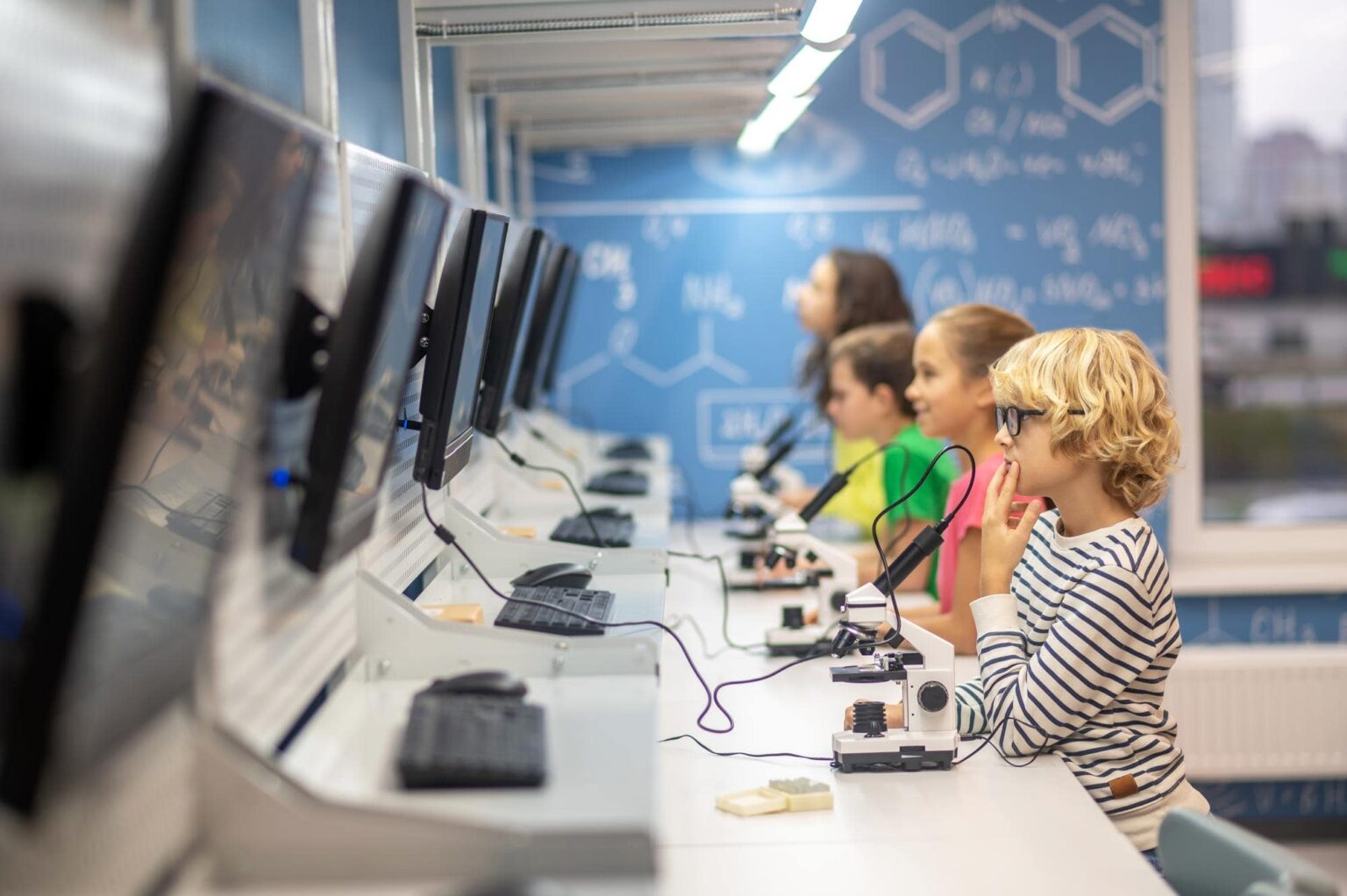The Internet of Things (IoT) is revolutionizing education by transforming classrooms and campus management into smart and connected environments. IoT technology in education enables the integration of various devices, sensors, and systems to enhance teaching, learning, and overall campus operations. Here’s how IoT is used in education for smart classrooms and campus management:
- Smart Classroom Infrastructure: IoT devices and sensors are used to create a connected infrastructure within classrooms. For example, smart lighting systems automatically adjust lighting levels based on natural light or occupancy, providing an optimal learning environment. Smart thermostats regulate temperature for comfort and energy efficiency. IoT-enabled whiteboards and projectors facilitate interactive and collaborative learning experiences.
- Asset Tracking and Management: IoT sensors can track and manage educational assets, such as laptops, tablets, and laboratory equipment. By using RFID or GPS technology, schools can monitor the location and usage of these assets, ensuring they are available when needed and preventing loss or theft. Asset tracking systems powered by IoT streamline inventory management processes and improve resource utilization.
- Safety and Security: IoT-based security systems enhance safety on campuses. Smart surveillance cameras equipped with video analytics can detect suspicious activities, monitor crowd density, and identify potential threats in real-time. IoT-enabled access control systems can regulate entry to buildings and facilities, ensuring authorized access and enhancing campus security.
- Energy Management: IoT sensors and smart meters can monitor energy consumption in educational buildings and facilities. By collecting and analyzing energy data, schools can identify areas of high energy usage and implement energy-saving measures. IoT-based energy management systems help reduce energy costs, improve sustainability, and promote environmental stewardship.
- Environmental Monitoring: IoT sensors can monitor environmental conditions within educational facilities. For instance, sensors can measure air quality, temperature, humidity, and noise levels. Real-time data on environmental factors helps maintain a healthy and conducive learning environment. It also enables proactive interventions to address any issues and ensure the well-being of students and staff.
- Attendance and Student Tracking: IoT-based attendance systems automate attendance tracking. RFID tags or smart cards can be used to monitor student entry and exit from classrooms and campus buildings. This data can be integrated with student management systems, providing accurate attendance records and facilitating efficient record-keeping processes.
- Personalized Learning and Data Analytics: IoT devices and platforms collect data on student interactions and engagement with learning materials and educational technologies. This data can be analyzed using learning analytics tools to gain insights into student learning patterns, preferences, and progress. These insights help educators personalize instruction, identify areas for improvement, and provide targeted support to individual students.
- Campus Services Optimization: IoT technology optimizes campus services and operations. For example, IoT-enabled waste management systems can optimize waste collection routes and schedules based on real-time data. Smart parking systems guide drivers to available parking spaces, reducing congestion and improving traffic flow. IoT-based facility maintenance systems can proactively detect equipment failures and schedule maintenance activities, ensuring efficient operation of campus infrastructure.
By integrating IoT technology into education, schools and universities can create smart classrooms and campuses that improve teaching and learning experiences, enhance safety and security, optimize resource management, and promote sustainability. IoT-enabled educational environments provide opportunities for innovation, efficiency, and data-driven decision-making, ultimately enhancing the overall educational experience for students, teachers, and staff.



